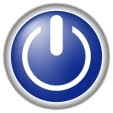Now, before you run off and go Kindle shopping, the important thing to remember is there are tablets falling from the sky these days. Big, small, heavy, light, color, black and white, tablet, e-reader....the options never end. Just as with the Kindle products, there is a decision process needed to find the best product (for you) to buy.
(Credit: Sarah Tew/CNET)
During the decision-making process, do not get overwhelmed with the options? Going to a store and looking at a dozen different choices can lead you to getting confused or missing an important factor that may sway your purchase. It comes down to asking simple questions and narrowing the field based on the answers that mean the most to you. What do you want to do? “I want to have a tablet” may not be the clearest answer. The biggest decision in buying can be made with this somewhat simple question. Are you looking to have a library at your fingertips or are you looking for a fuller mobile computing experience? If reading books and magazines is the extent of your desire, then an e-reader may be sufficient. You can find a wonderful product under $150 with the various Amazon or Barnes & Noble products. Starting with the basic Kindle at $79 through the competing Kindle Touch and Nook Simple (both at $99). There is even a backlit Simple Touch at $139. If you are looking for an actual tablet experience (beyond just reading books), then you will be making a decision on price and size. There are mid-size tablets and full-size tablets that can provide similar multimedia experiences. The Apple iPad line, Samsung Galaxy, and Asus Transformer line can do everything under the sun. Whether it is watching Netflix, checking your mail, reading books, and even document editing are possible with these devices. You are going to be getting a slightly larger (and color) touch screen with these devices which opens the door for everything short of having a laptop in front of you. With the additional performance, you will be shelling out more money for the devices. The bigger tablets will run between $400 and $900 while the smaller versions can be found under $350. The Kindle Fire and Nook Tablet provide a stepping stone between simple e-readers and full-fledged tablet computers. They sacrifice benefits from both ends of the spectrum to allow for a good all around experience. If you are looking for a color tablet that provides an avenue towards reading and regular tablet computing, these are the devices for you. Both devices also provide a stepping stone in terms of price as they can be found under $200. Tablet computing without shelling out the better part of a grand is very enticing. Where and how are you going to do what you want to do? There are two factors that can affect usability, screen type and connection type. The two available screen types are a black and white e-Ink and a color LCD screen. The black and white screens are seen in the e-readers. The screen is designed for book reading. There is less strain put on your eyes and outdoor glare is limited. This is balanced by the need for a light in darker environments. The LCD screens are backlit and designed for a fuller computing experience. The glare limits them when used outdoors and you are not going to be reading books constantly on those devices. The eyestrain would be the same as sitting in front of a computer. Connection types vary between pure wireless to a readily available global wireless to data plan 3/4G compatible devices. You can, essentially, find an available connection at each level of device. There are e-readers (Kindle Touch), mid-sized tablets (7” Galaxy Tab), and larger tablets (iPad) that allow for data connections, but there are also wifi only devices (Kindle Fire, Nook Tablet, iPad and Galaxy Tab) if you are looking for a device around the house or at the office without needing something truly “on the go”. It is important to take the time to think about when and where you will be using the device as a data plan can add hundreds of dollars to the cost of a device (per year) just to use it. An extra device around the computer can give you flexibility (personally, I have found the Kindle Fire finding its way into my daily routine when I did not originally see a need for a tablet). There are countless other decisions that can be made for these devices. Processing speed, available RAM, the need for a camera, available apps and programs, types of media desired, web browsing experience, and you can go on and on. Personally, I feel that personal preference decisions can be as varied as the people making those decisions. I cannot provide an answer on the feel or look of a device nor can I tell you what programs you may enjoy or the operating system that suits you. However, I am surprised at the number of people who look to make a purchase without using the available devices. If I can give you one bit of information.....USE THE DEVICES! There are dozens of stores selling the devices and there are always display models available. Pick one up and hold it. Browse the internet. Read a few pages of a book. You could spend a day reading 20 reviews only to find that you do not like holding one of the devices after the first 30 seconds.
Even if you take advantage of the Kardon Technology New Computer Consulting and Purchasing service offered, we still advise you to look at an actual product. Be sure to check out the below links. They each provide excellent in-depth reviews complete with physical hardware comparisons, usability comparisons, and cost expectations.

No comments:
Post a Comment